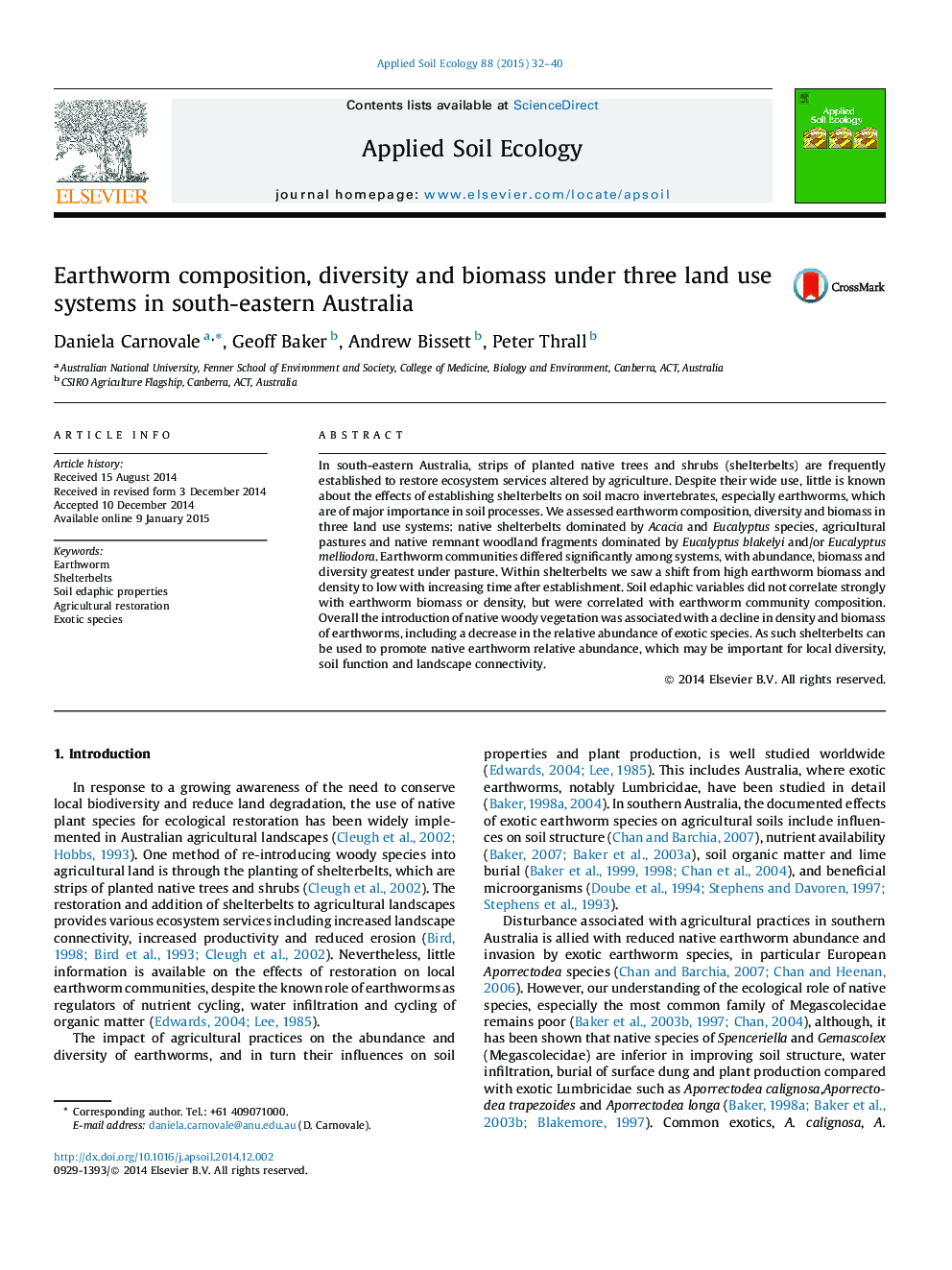| کد مقاله | کد نشریه | سال انتشار | مقاله انگلیسی | نسخه تمام متن |
|---|---|---|---|---|
| 4382116 | 1617795 | 2015 | 9 صفحه PDF | دانلود رایگان |
• Earthworm composition, diversity and biomass were assessed in three land use systems in south-eastern Australia: native shelterbelts, agricultural pastures and native remnant woodland fragments.
• Shelterbelt establishment was associated with a decline in density and biomass of earthworms.
• Earthworm biomass and density declined with increasing time after shelterbelt establishment.
• Soil chemical variables were not strong predictors of earthworm biomass and density, but could be used to explain overall community composition.
In south-eastern Australia, strips of planted native trees and shrubs (shelterbelts) are frequently established to restore ecosystem services altered by agriculture. Despite their wide use, little is known about the effects of establishing shelterbelts on soil macro invertebrates, especially earthworms, which are of major importance in soil processes. We assessed earthworm composition, diversity and biomass in three land use systems: native shelterbelts dominated by Acacia and Eucalyptus species, agricultural pastures and native remnant woodland fragments dominated by Eucalyptus blakelyi and/or Eucalyptus melliodora. Earthworm communities differed significantly among systems, with abundance, biomass and diversity greatest under pasture. Within shelterbelts we saw a shift from high earthworm biomass and density to low with increasing time after establishment. Soil edaphic variables did not correlate strongly with earthworm biomass or density, but were correlated with earthworm community composition. Overall the introduction of native woody vegetation was associated with a decline in density and biomass of earthworms, including a decrease in the relative abundance of exotic species. As such shelterbelts can be used to promote native earthworm relative abundance, which may be important for local diversity, soil function and landscape connectivity.
Journal: Applied Soil Ecology - Volume 88, April 2015, Pages 32–40
